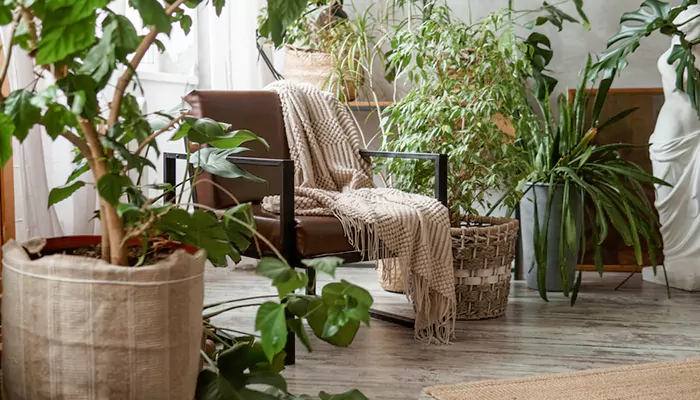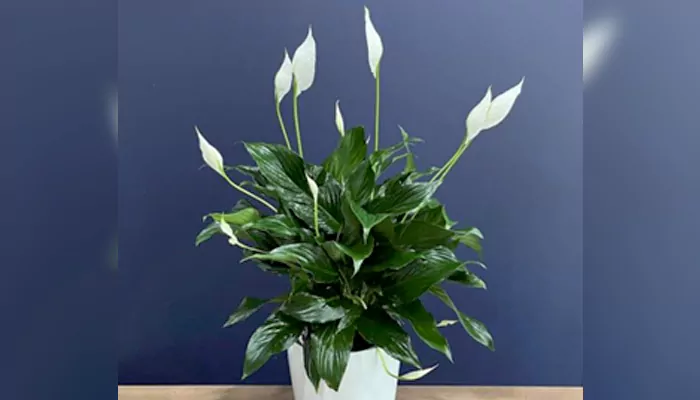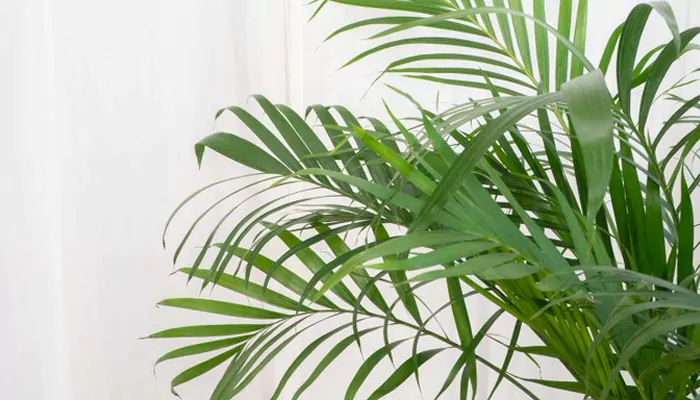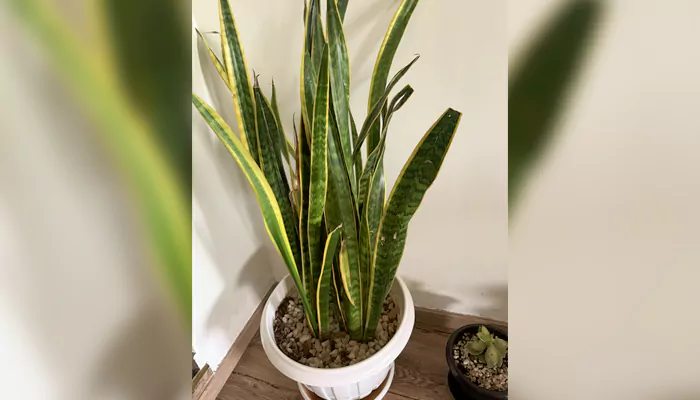
As the rain dances outside, let greenery thrive within.
The monsoon brings that unmistakable joy with the smell of wet earth, cooler breezes, and, of course, everything around turning lush and green. But while plants love the rains, stepping out into the garden every day isn’t always practical (though getting drenched once in a while does feel great!). However, that’s where indoor plants come to our rescue. Thanks to the extra moisture in the air, many of them actually grow better during this season. So, if you’re stuck indoors while the rain pours outside, why not turn your space into a little green retreat?
In this story, we’re diving into a bunch of indoor plants that absolutely thrive during the Indian monsoon.
With its dark green leaves and elegant white blooms, the peace lily feels like it was made for the monsoon. It not only flourishes in humid conditions but also helps purify the air, which can feel a bit heavy during this season.
Where to Place It: A well-lit bathroom or a window that gets filtered light is ideal, as the natural humidity helps it thrive.
Care Tips: Water when the top of the soil starts to dry out (usually once a week). Good drainage is key to avoiding soggy roots. Gently wiping the leaves keeps them glossy and happy.
Good to Know: While beautiful, the peace lily can be mildly toxic to pets, so it’s best kept on a higher shelf or out of reach. Its calming presence, however, is perfect for those cozy, rainy evenings.

(Image Credit: Chaurembo X)
Areca Palm (Dypsis lutescens)
If you're looking to bring a bit of the tropics indoors, the areca palm is your answer. With its arching, feather-like fronds, it loves monsoon humidity and grows visibly greener in this season.
Where to Place It: Set it in a corner with bright, indirect light, near a balcony or a north-facing window works well.
Care Tips: Water every 10 days or so; the moist weather helps keep the soil damp longer. Don’t forget to mist the leaves occasionally to mimic their natural environment.
Good to Know: Considered a symbol of prosperity in many Indian households, this palm is also pet-safe. So it's a win-win for plant parents with furry friends.

If you’re looking for a fuss-free plant that asks for little but gives plenty, the spider plant is it. Its striped leaves and dangling offshoots do well in moist air and add a playful touch to your space.
Where to Place It: Hang it by a bright window or place it on a shelf; it can handle both bright and low light.
Care Tips: Water once a week, but always check the soil first. Overwatering is the one thing it doesn’t forgive. You can snip the baby plantlets or use them to grow new ones.
Good to Know: Spider plants are non-toxic, air-purifying champs. Safe for pets and kids, they’re perfect for first-time plant owners.

A staple in Indian homes, the money plant (or pothos) is a fast grower in humid weather. Its trailing vines and heart-shaped leaves bring in not just greenery, but a bit of charm and folklore.
Where to Place It: It’s flexible - a hanging pot, a bottle of water on a shelf, or even trailing from a balcony.
Care Tips: Water every 7-10 days, or whenever the top layer of soil feels dry. If kept in water, change it weekly. Trim it regularly to keep it bushy.
Good to Know: According to Vastu, placing a money plant in the southeast corner attracts positive energy. And yes, it’s one of the easiest plants to propagate; just cut and place in water.
Did You Know?
— IFFCO BAZAR (@IFFCOBAZAR) March 31, 2022
The money plant is the only plant that can grow in any season and does not require any specific climatic conditions to thrive.#IFFCO #IFFCOBAZAR #MoneyPlant #UrbanGardening #DidYouKnowFacts #DYK pic.twitter.com/4OYLZk8LgV
(Credit: IFFCO BAZAR)
The snake plant is a hardy monsoon survivor. With its tall, upright leaves and striking patterns, it asks for very little and gives back fresh air, even while you sleep.
Where to Place It: Almost anywhere: from bright windows to low-light corners, it adapts effortlessly.
Care Tips: Water sparingly - every two weeks is usually enough. It holds water in its leaves and doesn’t like wet feet, so drainage is essential.
Good to Know: This plant releases oxygen at night, making it great for bedrooms. While it’s generally safe, it’s best kept out of reach of curious pets.
For severe earache, get the rhizome of snake plant, wash it throughly and grind it into paste.
— ChiefHerbalist (@HerbalistChief) July 12, 2025
Apply two drops of the juice at affected place once daily. You will be relieved.
Nature heals. pic.twitter.com/iIYxO2mbe8
(Credit: ChiefHerbalist)
Boston ferns bring a bit of the forest indoors. Their frilly, soft fronds love moisture, making them an excellent pick for monsoon days.
Where to Place It: Bathrooms with a window, or shaded balconies that get indirect light.
Care Tips: Keep the soil moist but never soggy. Water every 4-5 days and mist regularly. Trim dry fronds to keep it fresh.
Good to Know: Boston ferns are non-toxic and instantly add a calming, spa-like feel to any space, perfect for winding down on a rainy evening.

Also known as the arrowhead plant, Syngonium is quick to grow and easy to love. With its shapely leaves in shades of green, cream, and pink, it brings a soft pop of colour to dull days.
Where to Place It: A shelf, side table, or any spot with bright, indirect light.
Care Tips: Water once a week or when the top inch of soil feels dry. Make sure the pot drains well, and prune back leggy stems to keep it full.
Good to Know: While mildly toxic, it’s easy to place safely out of reach. Its colours and patterns make it an instant favourite among plant lovers and Instagrammers alike.
For those who like a splash of colour with their greens, the anthurium is a show-stealer. Its glossy leaves and bright red or pink flowers brighten up any rainy-day room.
Where to Place It: Near a bright window, but out of direct sunlight. East-facing is ideal.
Care Tips: Water weekly, or when the soil feels dry to the touch. Mist occasionally, and remove faded blooms to encourage more. Drainage is a must.
Good to Know: Anthuriums are seen as symbols of love and hospitality. Just be mindful around pets, as the plant is toxic if ingested.
Rainy days might keep us indoors, but that doesn’t mean we have to miss out on nature’s beauty. These indoor plants love the monsoon as much as we do; soaking up the moisture, growing fast, and filling our homes with life.
If you’re just starting out, go easy and try a spider plant or a snake plant. And before you know it, you’ll have a home full of green companions that not only look good but make you feel good, too.